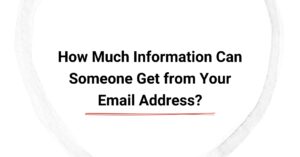An email marketing campaign is only effective when your emails reach subscribers’ inboxes. You might have the best email subject line, the most attractive body copy, or the most lucrative offer but still fail to generate leads or convert prospects to customers. Why? Because of poor email deliverability.
In this article, we delve deeper into the fundamentals of email deliverability, explore the differences between delivery and deliverability, and help you familiarize yourself with the top email deliverability metrics.
Difference Between Email Deliverability and Delivery
Most people can’t distinguish between email deliverability and delivery. So, let’s break it down once and for all. Email deliverability tells you whether your email has reached the recipient’s inbox or the spam folder. Email delivery, on the other hand, tells you whether or not your emails were received by the recipient’s inbox provider.
This means that the more your emails land in the recipients’ inboxes, the higher the deliverability rate. Conversely, all unbounced emails count toward the email delivery rate. So, the goal is to aim for a deliverability score higher than 90 and a bounce rate lower than 5%. Therefore, it is crucial to use the right tools and metrics to track the performance of your email campaigns.
How to Track Email Deliverability
Here are seven effective steps for identifying and fixing email deliverability issues before your sender reputation takes a severe hit:
Verify the Sender Identity
The sender’s identity is one of the most crucial factors to consider. Every reputable email service provider will analyze the “from” address before forwarding emails to the recipient’s inbox. You should configure the DKIM, SPF, and DMARC protocols to avoid triggering spam filters.
Use Email Testing Tools
You can use any prominent email testing tool, like MailChimp, MailTester, Sender Score, and Mailtrap, to get comprehensive insights into the deliverability rates of your email campaigns. These tools monitor essential factors like email list hygiene, sender’s domain authority, blacklist status, and email content analysis.
Check Blacklists
One of the most effective ways to diagnose poor email deliverability rates is to check inbox providers’ blacklists. You can use Blackbox to identify if your domain or IP address is on any major blacklist.
Monitor Email Engagement Metrics
Monitoring the top email performance metrics like open rates, click-through rates, and spam complaints, can help you identify potential problems with email deliverability. You can use this information to optimize the performance of your email marketing campaigns.
Check Feedback Loops
Every popular mailbox provider, like Google, Bing, and Yahoo, lets users register for their feedback loops. You will be notified anytime a user marks your emails as spam. You can use this information to improve your email campaigns to avoid triggering spam filters in the future.
Use an Email Authentication Tool
Email verification tools like Alfred authenticate, monitor, and report potential problems with your email deliverability, helping you identify potential issues and solve them before your sender’s reputation takes a serious hit.
Metrics for Tracking Email Performance
Email deliverability metrics are key performance indicators (KPIs) that tell you how many people receive, open, and interact with your email messages. They provide detailed reports that you can use to improve your email marketing strategy. Let’s walk you through the most important metrics.
Deliverability Rate
The email deliverability rate measures the ability of your messages to reach the target audience’s inbox. Your deliverability score is measured on a scale from 0 to 100 and calculates factors that could affect email deliverability. A high deliverability rate ensures that your messages are delivered to the intended audience, increasing your campaign performance.
Open Rate
Open rates measure the percentage of subscribers who open your email. Therefore, a higher open rate indicates your emails are compelling and engaging, which increases the chances of recipients taking further action. To increase your open rates, you can write compelling subject lines, clean your email list frequently, and follow other general email deliverability best practices.
Bounce Rate
Email bounce rates measure the percentage of emails that could not be delivered. A high bounce rate signifies that you are trying to send emails to invalid addresses. Soft bounces occur when there is a temporary issue with the recipient’s mail server. Hard bounces are caused by more severe problems, like a non-existent address.
Spam Complaint Rate
Spam complaints measure the number of users who send emails to the spam folder. A high spam complaint rate can hamper your email deliverability and sender reputation. To minimize spam complaints, you can remove unresponsive email addresses from your mailing list and add a double opt-in form to secure the recipient’s permission before contacting them.
Unsubscribe Rate
The unsubscribe rate measures the percentage of users that have clicked on the unsubscribe link. A high unsubscribe rate signifies that your audience is disinterested in your content. You can reduce the unsubscribe rate by taking feedback from people who choose to unsubscribe, sending fewer emails, and offering value in the form of discounts or free resources.
Sender Reputation
Your sender reputation is a theoretical measure of how your audience perceives your emails. Email providers calculate your sender reputation based on metrics such as open rates, sending frequency, reply rates, etc. If your sender reputation takes a hit, your emails are more likely to end up in the recipient’s spam folder. To avoid lowering your sender score, avoid using shared domains, spam trigger words, and suddenly sending too many emails.
Click-through Rate
Click-through rates measure the percentage of people who click on links embedded in your email content. It indicates your audience’s interest and engagement levels. A high click rate signifies greater audience interaction and is paramount for the efficacy of your campaigns.
Proven Strategies for Improved Email Deliverability
Here are five proven strategies for improving your email deliverability rates. Feel free to use this as a checklist to analyze your current email marketing campaigns.
Maintain Good Email List Hygiene
Email list hygiene is one of the most important factors to consider when sending marketing emails. You should clean your email lists every three months to find and remove invalid addresses, spam traps, typos, etc. This will drastically reduce your bounce rates and improve open rates and conversions over time.
Write Engaging Subject Lines
Your email subject line is the most important piece of content since it’s the first point of contact between you and the reader. Therefore, you must spend considerable time and effort testing subject lines to find one that best resonates with your audience.
Segmentation and Personalization
Sending relevant content based on subscriber preferences can increase audience engagement. You should segregate your mailing list based on customer likes and interests and send personalized offers to gain their attention.
Add Email Authentication Protocols
Email authentication protocols like SPF, DKIM, and DMARC allow email servers to validate the sending domain’s identity. Add email authentication protocols to your server’s DNS record to improve your chances of reaching customers’ inboxes.
Fine-tune Your Marketing Strategies
Deliverability metrics provide detailed insights into the performance of your email campaigns. Use it to identify areas of improvement and fine-tune your email strategies to better engage the audience. This is a continuous process, so streamline your efforts with an email deliverability testing tool.
Boost Your Email Deliverability Rates with Expert Guidance
High email deliverability rates can supercharge your email marketing campaigns, boost customer engagement, and grow your business. Book a discovery call today to learn how the experts at Email Industries can optimize your email campaigns and increase open, click-through, engagement, and conversion rates, so you meet customers in their inboxes.









